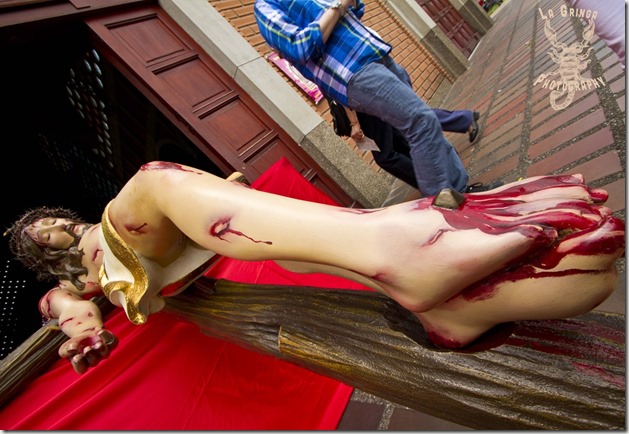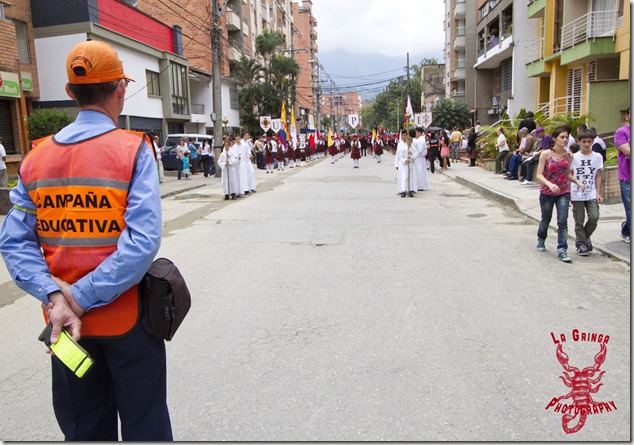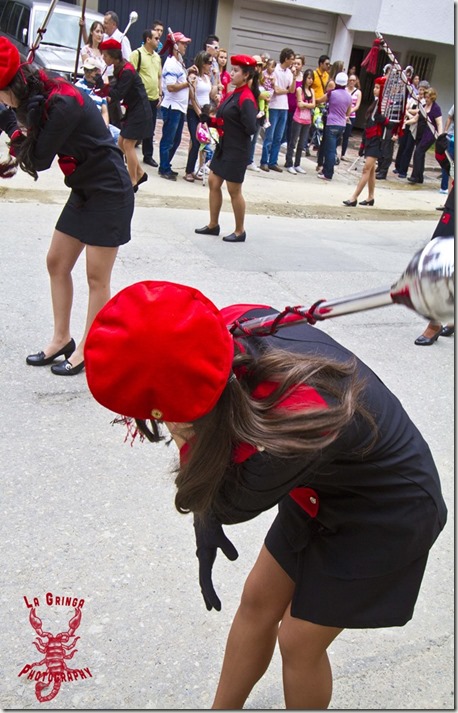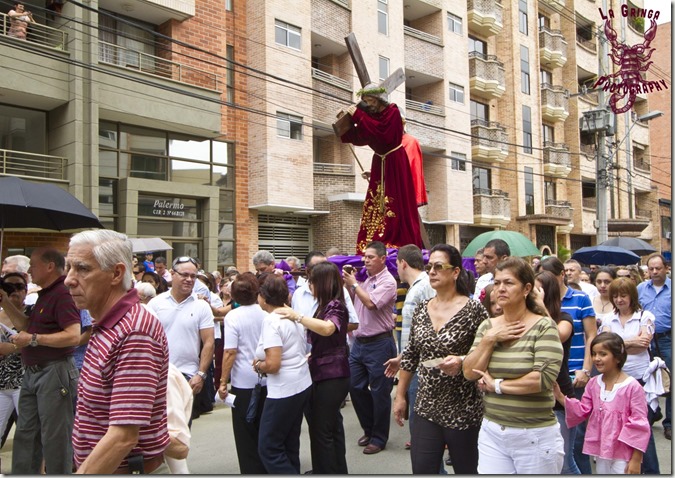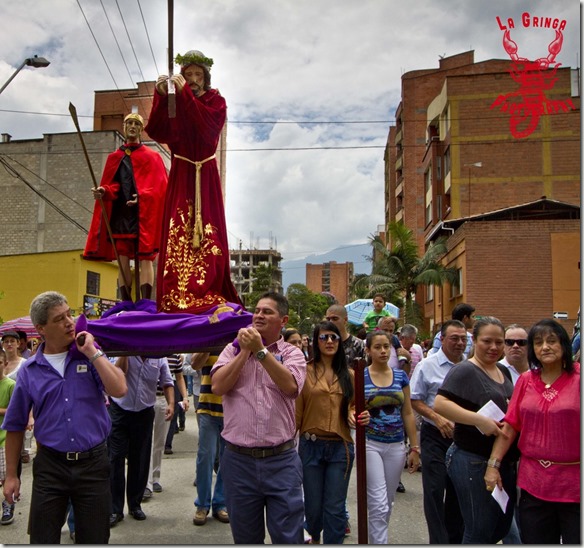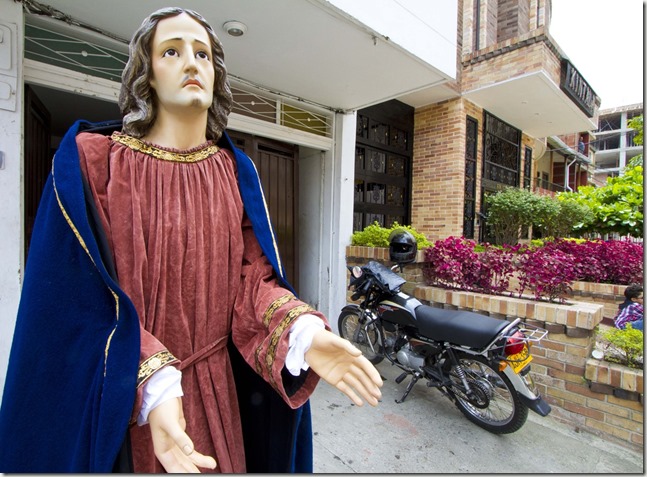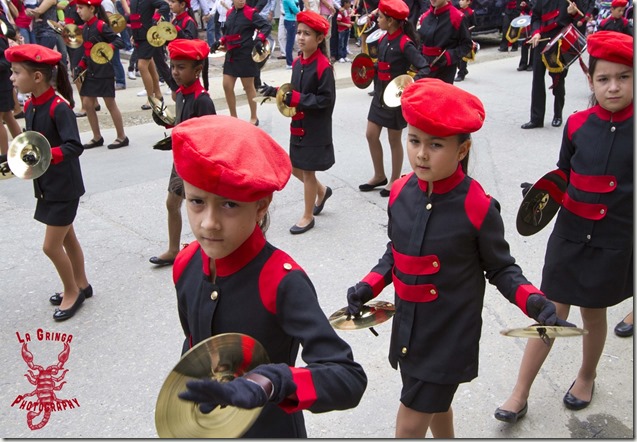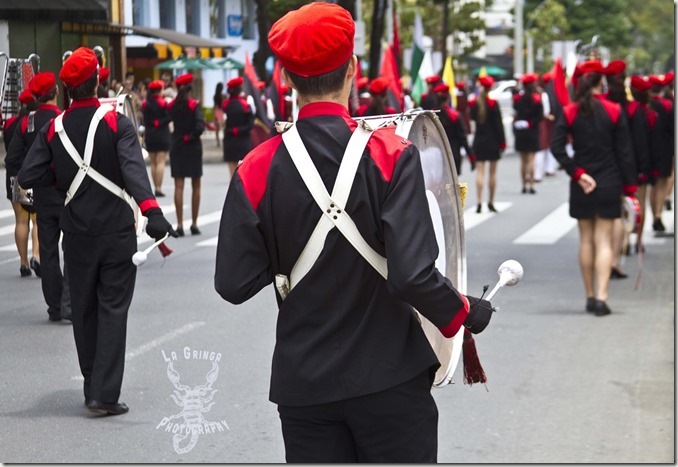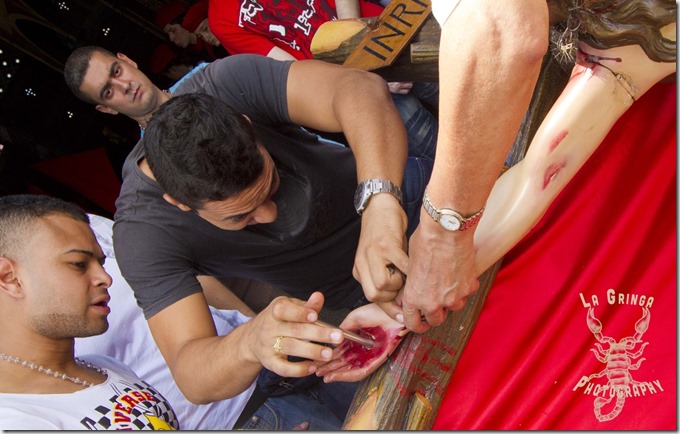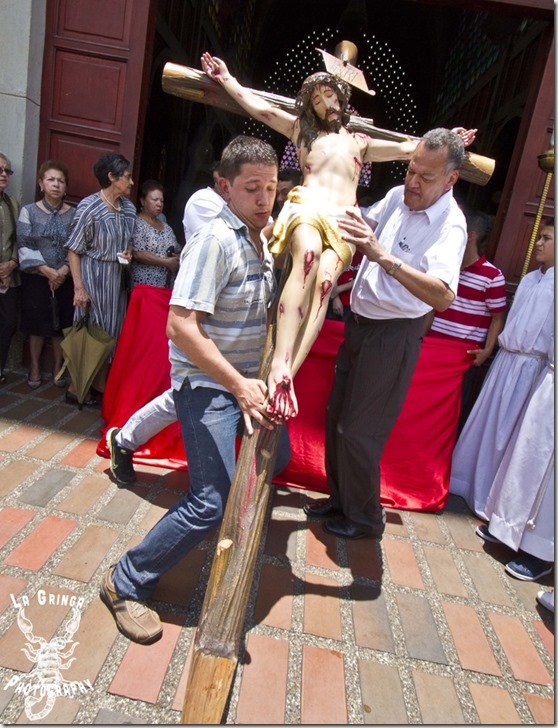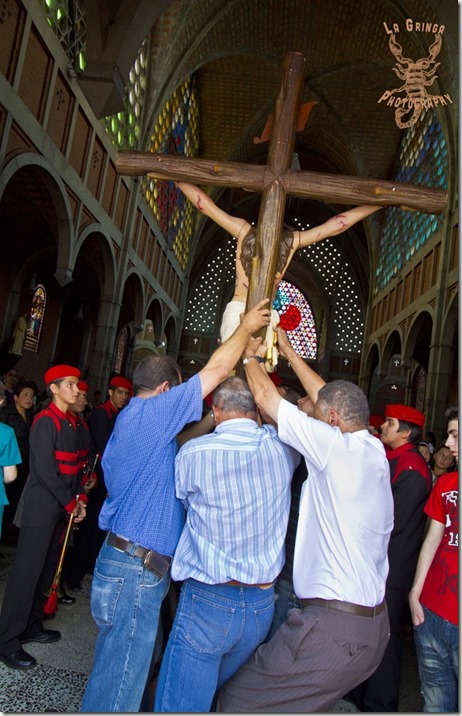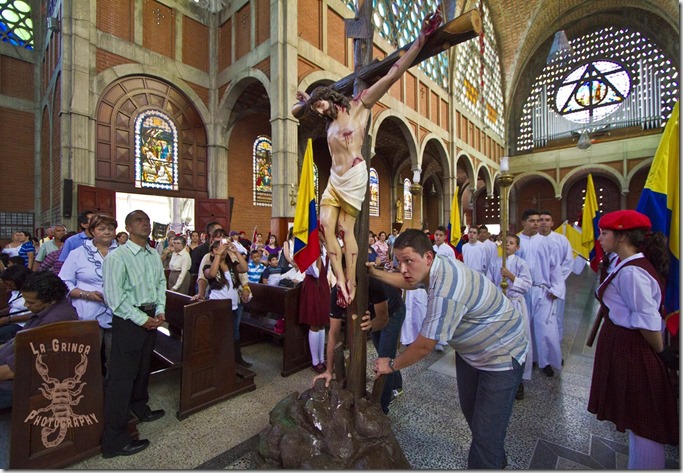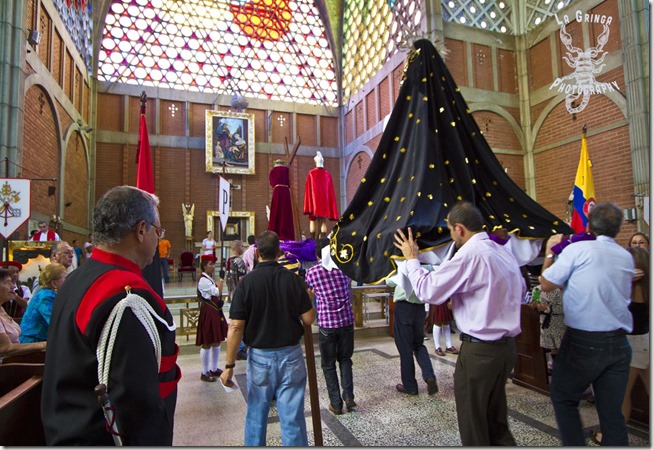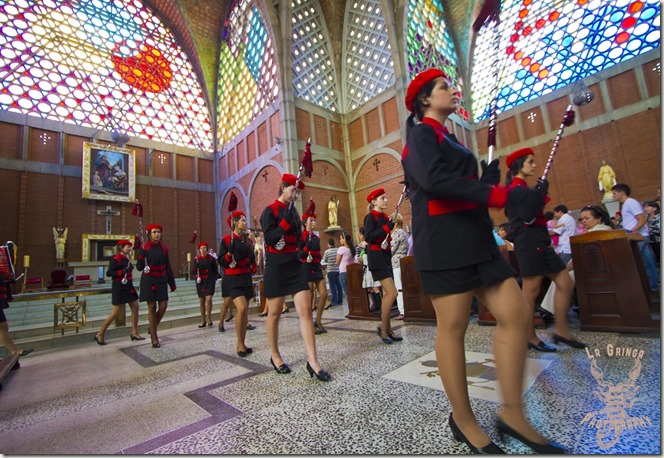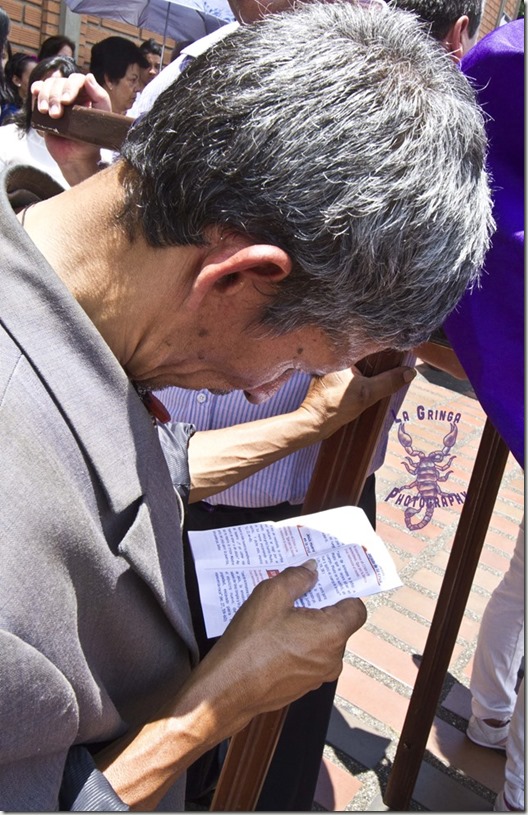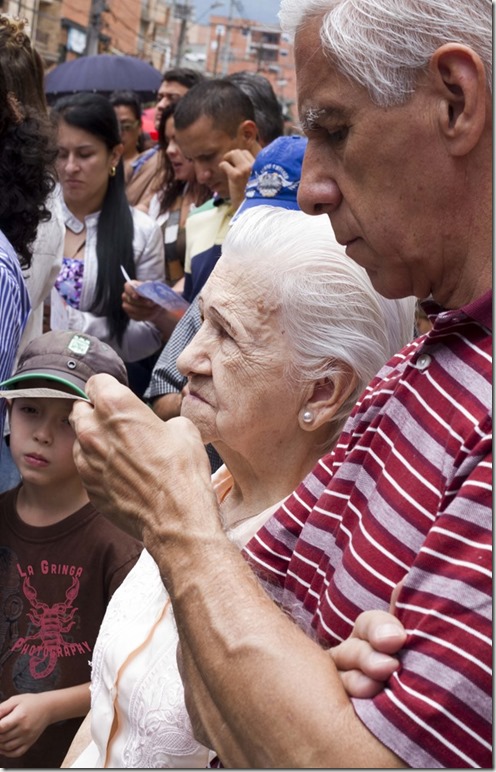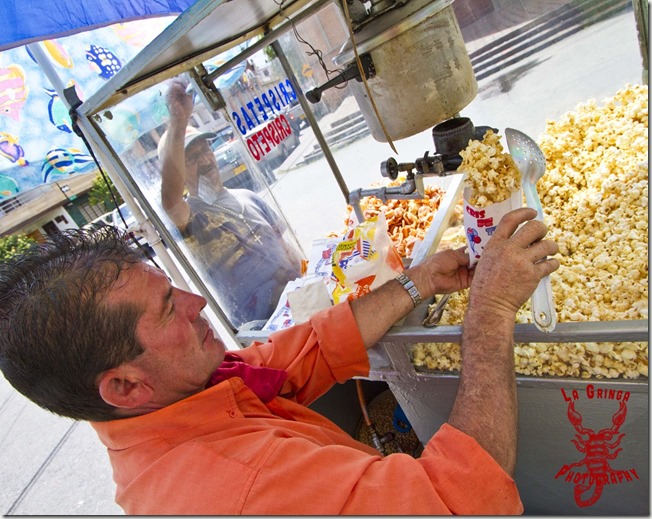Semana Santa, (pronouced: Say-mah-nah Sahn-ta) or Holy Week, which celebrates the death and resurrection of Jesus Christ, is one of the most important – if not the most important- holidays of the year in the approximately 90% Catholic country of Colombia.
Growing up in the states, this holiday is celebrated on Easter Sunday by a giant rabbit that hops around leaving plastic-grass-filled baskets full of candy, and candy-filled eggs to children. Yup, we have a giant bunny, Colombia has a week long religious ceremony. But the largest celebration takes place on the Friday before Easter.
On Friday, Colombians mourn the death of Jesus Christ. According to the Bible, this is the day Jesus was led to the hill, dragging his cross on his shoulders, and nailed to the cross to die. On this day, churches open early in the morning, and at around 10 am, a colorful and solemn procession begins. The procession I went to was led by a marching band of children, complete with flag waivers and majorettes.
Behind the band comes the statues. People carry a statue of Jesus carrying a cross and being guarded by the Romans. (ok, there is just one Roman in this particular procession).
This symbolizes Jesus’s long walk to death. In some towns, this act is portrayed in real life, and a chosen man carries a full sized cross down the streets. In Medellin, real men carry this giant (and obviously very heavy) statue.
People gather around this statue, following it, gazing upon it, and praying to God as they walk down the streets. Some families create their own statues of the disciples and the Virgin Mary, and as the main Jesus statue pass by, these families lift their own statues onto their shoulders, and jump into the crowd, becoming part of the procession themselves.
Having one of these disciple statues is commonly a sign of the families wealth and importance. It is considered an honour and a burden to have and carry these life size, heavy figures down the streets. It is also a way to brag how much money you have. Creating these statues is expensive, so only the wealthy can afford to make them. To have one in a parade is a way of showing off your wealth to all your neighbours, under the pretense of humility and humbleness. It’s a left-handed way of saying “Look at my money. I’m better than you!”
The entire procession weaves in and out of streets, finishing in front of the main doors of the church. These parades last a few blocks to a couple of miles.
At the church doors, the ceremony climaxes with the nailing of another figure of Jesus to a cross and raising him up, just like the bible describes. I have been told that in some smaller cities this is also played out in real life, but the nails are fake, and a man either stands on a platform or is tied to the cross by his wrists.
Then, one by one, the figures, led by the Jesus-on-the –cross statue, are rolled down the center aisle of the church, and placed upon the altar. Then the band, which has filtered in to the outer aisles of the church, now moves in line towards the front, and silently march out of the church, down the center aisle, past all the parishioners.
It is quite a beautiful ceremony.
After this elaborate ritual, starts a long and emotional mass.
I also noticed, quite a few people arrive to the church ahead of the parade and touch the wounds of Jesus on the cross (while he is propped up diagonally outside, before he is raised.) They touch the wounds, then make the sign of the trinity on their forehead and murmur silent prayers to themselves. Many people, especially the older ones, look truly sad.
This is a day to mourn Jesus’s death, and many people look like they really are in mourning; while others seem to just enjoy the activities. There are even food vendors outside selling popcorn and fried foods to the crowds.
The rituals of Easter Weekend in Medellin are far from the giant egg-laying, cavity-endorsing rabbit we have in the states.
Semana Santa 2013 will be celebrated on March 29, 2013. If you are in Colombia, or any Latin American country, I recommend searching out a local celebration.
Cheers!
About Dani Blanchette
I am a freelance travel and music photographer and creator of GoingNomadic.com.
I love music, food, and exploring cities without guidebooks. I’ve flown a helicopter, hitchhiked down the east coast USA, and once snuck into the back of a zoo (in Serbia) and pet a lion.
I am always up for an adventure, and sometimes I videotape them.

